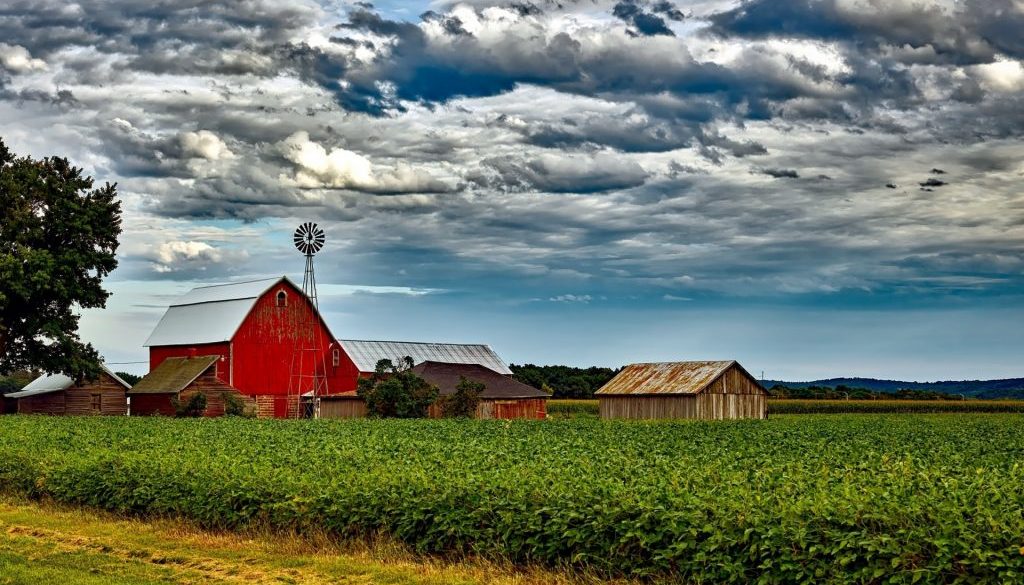Facing Climate Change on US Farms: An Urgent Need for Science-Based Policy
By Marica Delonge, Union of Concerned Scientists
It’s already November, but farmers across the nation are still suffering in the aftermath of a series of extreme weather events that wrought havoc this year. It began with devastating spring flooding and wet weather that was record-setting, visible from space, and had ripple effects far beyond the farm.
Some farmers in the Great Plains were even hit with opposite water challenges just months apart, when failing infrastructure brought water shortages right on the heels of flooding. These events remain top of mind for many farmers facing uncertain yields and profit at the end of a difficult season, with some still trying to harvest crops as winter closes in.
This year’s floods are just one reminder of the sober warnings from US and global scientists regarding agriculture’s vulnerability to climate change. Just this month, the wildfires raging through California have put even more farms at risk. Other reminders include dangerous heat, drought, and lack of clean water. Meanwhile, more subtle changes, like shifting growing conditions, have also been making trouble. For fruit and nut trees, for example, declining winter “chill” hours jeopardize yields, while early blooming leaves them vulnerable to spring freezes – this is what prompted heightened fruit prices and made the news in 2017.
In short, climate change impacts take many shapes,with cascading effects, and with many farmers facing more than one at a time.
Costly consequences of the climate crisis
At a time when farmers are struggling to stay afloat, the burden of weather and climate disasters is particularly heavy, and the need for disaster relief acute. The 2017 Census of Agriculture revealed that less than half of farms reported a profit, and net farm incomes averaged just $43,053 per farm (even lower than the $43,750 reported in 2012). And recent reports suggest that 2019’s farm debt may reach a record high, with farm bankruptcies also on the rise. Keeping farming legacies alive means supporting farmers through these very specific climate realities.
At the same time, it’s worth noting that climate change impacts are starting to rack up quite the bill for taxpayers. In September, the USDA announced a disaster relief package worth over $3 billion to help US farmers recover from crop and milk losses caused by extreme weather from 2018-2019. The package covered both damaged crops and “prevented planting” (cases where weather extremes kept farmers from planting crops in the first place), but only represented a subset of recent costs for weather-related farm damages. For example, in July, the USDA’s Natural Resources Conservation Service announced over $200 million to fund conservation easements for lands damaged by flooding. And these federal relief programs are in addition to others, including the safety net provided by the Federal Crop Insurance Program.
Unfortunately, such costs are becoming routine, rather than exceptions. Between 2011 and 2016, flood-and drought-related claims to federal crop insurance programs reached over $38 billion in payouts, averaging over $6 billion per year. And these types of claims are projected to increase as climate change ramps up, costing taxpayers significantly more decades down the line. This, by the way, is pricey. For a little perspective, the Conservation Stewardship Program—one of the largest national programs for sustainable agriculture and one that can help with both climate change adaptation and mitigation—had a budget of a relatively small $700 million for 2019.
Farmers and soil at the forefront
With disasters picking up the pace, it’s no surprise that farmers around the country are speaking up about climate change, citing unpredictable and more extreme weather patterns, including winds, heat, rain, and more. But much more importantly, farmers in states like California and Iowa and beyond are already stepping up and fighting back. Further, many are building resilience in ways that have benefits not only on-site, but also downstream.
A growing body of science (as my colleagues and I have written and podcasted) points to solutions—solutions that start with soil. Healthy, living soil promotes resilience through practices that can also increase carbon storage, contributing toward reducing the nation’s net heat-trapping emissions. There are also opportunities for co-benefits—like cleaner water, biodiversity, and even improved profits. Although there’s still much to learn, the prospect that farmers could adapt to a changing climate, sustaining their livelihoods and legacies while also helping to turn the tide is exciting, to say the least.
Investing in science-based policies that support farmers and benefit all
Decades of shortsighted federal farm policies have incentivized practices that have depleted and damaged soil, which is now hindering farmers’ ability to adapt to a changing climate. Rebuilding soils now requires investing in them, and in farmers. A growing number of states have already taken up that cause, but other states, Congress, and the USDA also need to act.
Moreover, this year’s record-setting weather, with its difficult and at times heartbreaking effects on farmers and farmworkers, illustrated (again and again) the need for urgent action on climate change. The price of inaction is just too steep.
There’s no question that US farms will continue to face challenges for years to come. However, science-based policies and up-front investments can put them in a stronger position—not just to weather the storms, but to help lead the way to a low-carbon future.

